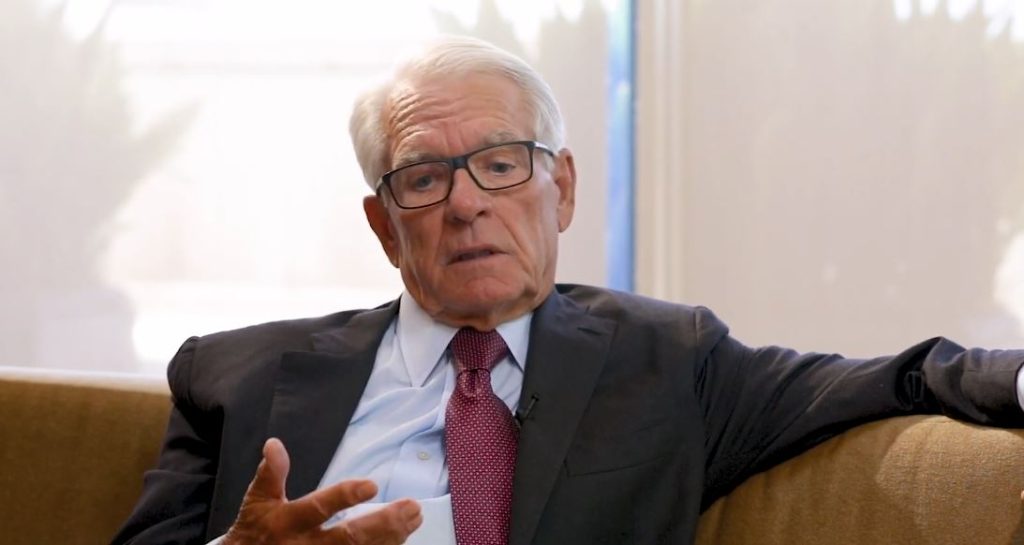Charles Schwab’s impressive net worth, which Forbes estimates will reach $11.4 billion in 2025, is evidence of his consistent drive and incredibly successful innovation. Even though he has been semi-retired since 2008, Schwab continues to serve as the chairman and biggest shareholder of the brokerage that bears his name.

Schwab invented the idea of discount brokerage during the turbulent financial changes of the 1970s by using regulatory changes with remarkable foresight. In a particularly creative move during a period when broker trust was eroding, Schwab cut fees in half and prioritized customer loyalty over commissions when the SEC deregulated commissions.
His client-first philosophy, which larger firms only grudgingly adopted, has allowed his empire to become extraordinarily resilient over the past 50 years. The company is a pillar of financial security for millions of people, managing assets worth over $9 trillion and averaging millions of trades every day.
| Detail | Information |
|---|---|
| Full Name | Charles Robert Schwab Sr. |
| Birth Date | July 29, 1937 |
| Age | 87 years |
| Birthplace | Sacramento, California, USA |
| Education | Stanford University (BA, MBA) |
| Spouse | Helen Schwab |
| Children | 5 |
| Source of Wealth | Discount brokerage, investments |
| Current Position | Chairman, Charles Schwab Corporation |
| Net Worth (2025) | $11.4 billion |
| Notable Facts | Dyslexia advocate, philanthropist, art collector |
Another incredibly successful move was Charles Schwab’s 2019 decision to do away with trading commissions, which inspired a new generation of younger investors to enter markets that had previously seemed unapproachable. By carefully purchasing TD Ameritrade in 2020, Schwab broadened his influence even more and created a brokerage behemoth based on openness and accessibility.
In contrast to erratic tech billionaires whose fortunes depend precariously on ephemeral trends, Schwab’s wealth is still significantly tied to actual value creation, even though he owns about 5% of his company. Schwab has received at least $3 billion in dividends since going public with his business in 1987, which has continuously increased his wealth.
Personally, I find Schwab’s story to be incredibly motivating. Since receiving a dyslexia diagnosis at age 40, he has developed into a vocal supporter of kids with learning disabilities and established The Charles and Helen Schwab Foundation to provide innovative funding for research and assistance.
In keeping with his approach to finance, which is to make what was previously exclusive available to everyone, Schwab has significantly increased opportunities for those who have historically been underserved through strategic philanthropy.
His influence can also be seen in culture. Schwab has combined business success with a passion for societal enrichment to champion creativity as the chair of the board of the San Francisco Museum of Modern Art. Few leaders are able to strike such a delicate balance, especially in fields that are frequently criticized for being indifferent to human values.
Schwab continues to have a particularly significant impact on his peers. The mission statement of Schwab’s firm could easily be interpreted as a call to action for democratizing financial freedom, in contrast to the clandestine routes pursued by hedge fund tycoons.
With an incredibly flexible strategy, Schwab established a company that provides wealth management, banking, and brokerage services all under one roof. The business used its decades of experience to streamline operations and significantly lower client expenses without sacrificing service quality.
Schwab’s measured lifestyle is enhanced by his real estate holdings. His $20 million estate in Atherton, California, and his expansive ranch in Montana serve as retreats from the bustling financial hubs. Every property represents a man who has gradually created not only wealth but also long-term stability.
Schwab’s political contributions have continued to make him a fascinating topic in discussions about society at large. He has been vocal about preserving economic systems that promote individual freedom and enterprise, especially during times of political upheaval, and he has generously donated to conservative causes.
When Schwab stepped down as CEO in 2008, he trusted Walter W. Bettinger II, a highly selective successor, to lead the company. The company’s values were upheld during this remarkably seamless transition, which also accelerated innovation to satisfy the demands of the twenty-first century.
Schwab’s dedication to changing with the times is remarkably evident. His company continues to promote financial inclusion through programs like fractional share trading and no-minimum investment accounts, a cause that is becoming increasingly important as wealth disparities widen around the world.
Schwab’s legacy appears set to grow even more in the years to come. Schwab’s initial emphasis on affordability and client empowerment will probably continue to be the industry’s true north as robo-advisors, AI-driven financial tools, and international investing platforms become commonplace.
Although Schwab’s accomplishment feels especially unique, comparisons to peers like Warren Buffett and Larry Fink are inevitable. Schwab methodically broke down barriers, allowing regular investors to dream bigger, invest earlier, and save more wisely, while others accumulated wealth through exclusivity.
His story is especially helpful for anyone looking for a blueprint for making a meaningful impact because it shows how wealth can have an impact that extends well beyond the balance sheet when it is pursued through service and vision.
Even though Schwab’s net worth as of 2025 is impressive, it seems insignificant compared to what it stands for: decades of changing people’s beliefs about their futures as well as how they invest. In a financial sector that is frequently accused of pursuing ephemeral profits, Schwab’s patient, client-focused approach is a remarkably novel substitute.
